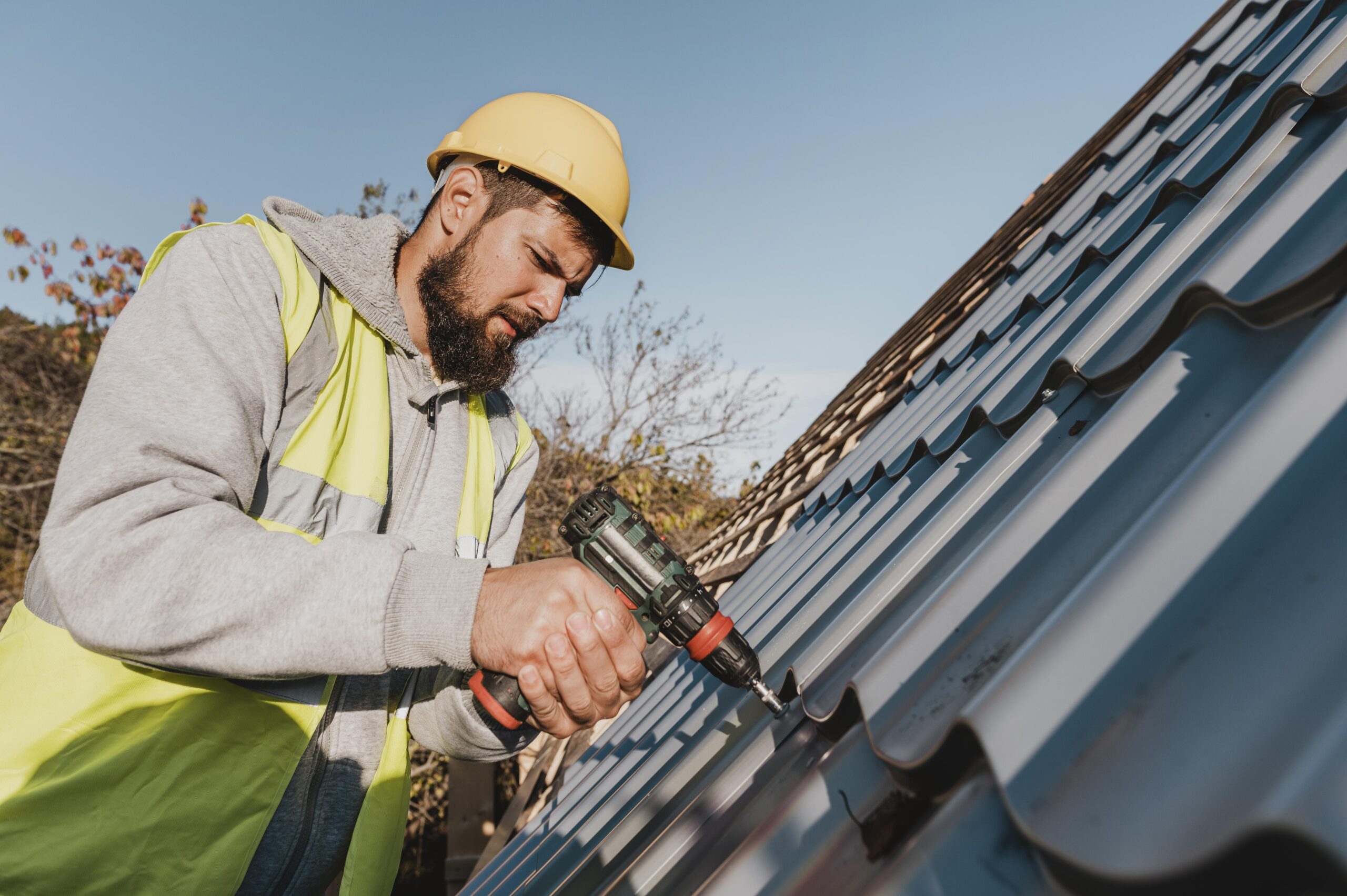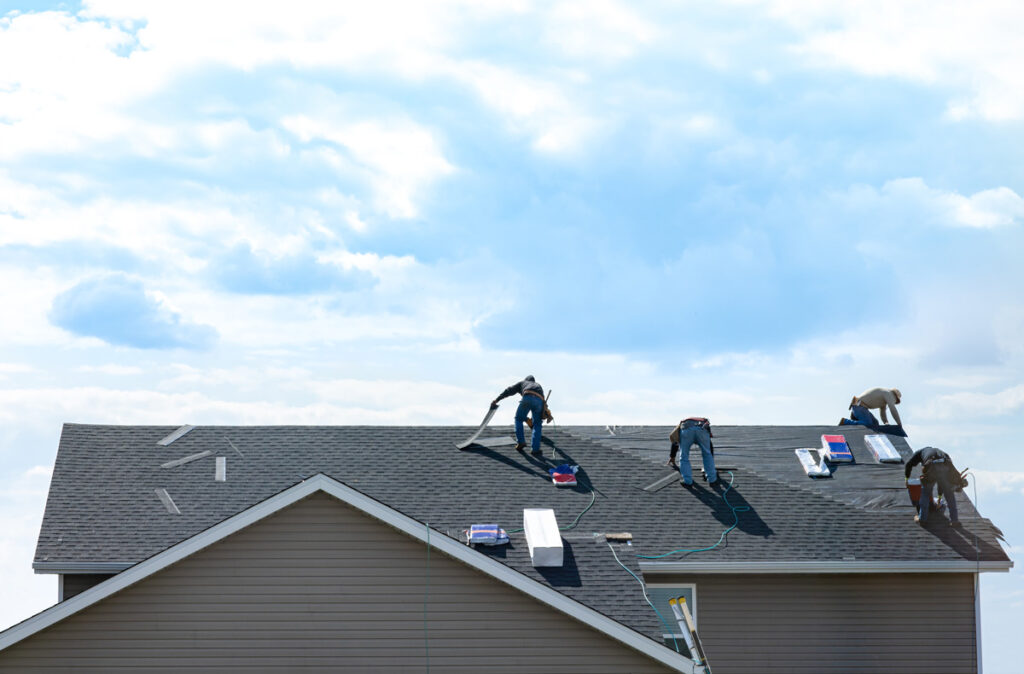Roofing Companies Oahu: Top-Rated Roofers for All Roofing Projects
Roofing Companies Oahu: Top-Rated Roofers for All Roofing Projects
Blog Article
Understanding the Various Types of Roofs: A Comprehensive Overview for Homeowners
In the world of homeownership, choosing the proper roof covering design is a choice that carries substantial implications for both functionality and aesthetic allure. With an array of choices-- varying from the traditional gable to the modern flat-- each type presents unique benefits and difficulties that must line up with the house owner's certain demands and ecological factors to consider. Comprehending these distinctions not only aids in making an educated selection however likewise influences long-lasting upkeep and power efficiency. As we explore the complexities of different roof covering types, it becomes noticeable that one size does not fit all; the right choice might surprise you.
Saddleback Roof
Gable roofings, defined by their triangular shape, are amongst the most popular roof covering styles due to their simplicity and effectiveness in shedding water and snow. This design includes two sloping sides that satisfy at a ridge, permitting effective drain and decreasing the threat of water build-up. The steep pitch generally associated with gable roofs improves their capacity to deal with heavy rainfall, making them appropriate for different climates.
Along with their sensible benefits, saddleback roofs supply aesthetic versatility. They can be adjusted to various architectural styles, from standard to contemporary homes. The layout can also accommodate added attributes such as dormer home windows, which boost all-natural light and ventilation in the attic room room.
In addition, gable roofings provide adequate area for insulation, adding to energy efficiency. Homeowners can choose from a range of roofing materials, including asphalt shingles, steel, and tiles, better improving customization options.
Despite their advantages, gable roof coverings might call for extra support in areas prone to high winds or heavy snowfall. Overall, the gable roofing remains a popular selection as a result of its blend of functionality, longevity, and visual allure.
Apartment Roofs
Level roofs are typically acknowledged for their minimal layout and practical applications, particularly in commercial and commercial settings (oahu roofing). These roofing systems feature a nearly straight or horizontal surface area, which enables very easy construction and functional room utilization. While they might do not have the aesthetic charm of pitched roofs, level roof coverings use countless advantages, particularly in city atmospheres where optimizing space is essential
One of the key advantages of flat roofs is their access. Property owners can utilize the roofing space for different objectives, such as roof gardens, balconies, or solar panel installments. Furthermore, flat roofing systems are commonly extra affordable to mount and maintain contrasted to their sloped counterparts, as they need fewer products and labor.
Typical materials utilized for flat roof coverings consist of built-up roof (BUR), changed asphalt, and single-ply membrane layers, each offering unique benefits. Overall, level roofs offer as a practical and adaptable choice for several home owners and companies alike.
Hip Roofing Systems
Hip roof coverings are defined by their sloped sides that assemble at the top, creating a ridge. This design is distinctive from saddleback roofs, as all 4 sides of a hip roofing system slope downwards towards the walls, offering a more steady framework. The angle of the slopes can differ, enabling for versatility in architectural aesthetics and capability.
One of the key benefits of hip roofings is their capability to hold up against hefty winds and adverse weather condition conditions. The sloped surface areas make it possible for better water drainage, minimizing the danger of leakages and water damages. Additionally, hip roofings supply raised attic space, which can be made use of for storage space or also exchanged habitable locations.
Nevertheless, building a hip roof can be more complex and expensive than less complex roofing system types, such as saddleback roofs. The extra product and labor associated with producing the slopes and making sure correct architectural stability can bring about greater expenditures. Regardless of these downsides, numerous property owners prefer hip roofings for their durability, aesthetic allure, and possibility for energy efficiency.
Mansard Roofs
Mansard roofings, typically identified by their one-of-a-kind four-sided design, attribute 2 inclines on each side, with the lower slope being steeper than the top. This architectural design, stemming from France in the 17th century, is not just aesthetically appealing however practical, as it makes best use of the functional room in the top floorings of a structure. The steep lower incline enables more clearance, making it a perfect option for lofts or attic rooms, which can be transformed right into living spaces.
Mansard roofs are identified by their flexibility, suiting numerous building styles, from standard to modern. They can be created with various materials, consisting of asphalt shingles, slate, or steel, supplying home owners with an array of alternatives to match their budgets and choices. Furthermore, the style enables the assimilation of dormer home more tips here windows, improving all-natural light and ventilation in the top levels.
Nevertheless, it is important to think about the potential downsides. Mansard roofs may need even more upkeep due to the intricacy of their layout, and their steep slopes can be challenging for snow and rainfall overflow. In general, mansard roofing systems incorporate style with practicality, making them a preferred option amongst homeowners seeking unique architectural functions.
Shed Roofings
As homeowners significantly look for simpleness and capability in their architectural layouts, dropped roofs have arised as a prominent option. Defined by a solitary sloping airplane, a shed roofing provides a minimal aesthetic that enhances various home designs, from modern to rustic.
One of the main benefits of a shed roof is its simple building and construction, which frequently equates to decrease labor and material costs. This style permits efficient water drainage, reducing the threat of leaks and water damage. Furthermore, the upright incline gives sufficient room for skylights, boosting all-natural light within the inside.
Shed roof coverings additionally offer flexibility in terms of use. They can be effectively integrated right into additions, garages, or outdoor structures like sheds and pavilions. In addition, this roofing style can suit various roof materials, consisting of metal, asphalt shingles, or even eco-friendly roofings, straightening with eco-friendly initiatives.
However, it is vital to think about regional environment problems, as hefty snow loads may necessitate adjustments to the roofing's angle or framework. Generally, shed roofings provide a useful and aesthetically pleasing choice for homeowners seeking to take full advantage of performance without endangering style.
Conclusion


Gable roof coverings, identified by their triangular shape, are amongst straight from the source the most popular roof covering designs due to their simplicity and performance in shedding water and snow. oahu roofing. The high pitch commonly linked with gable roofs boosts their ability to manage hefty rainfall, making them suitable for various climates
While they may lack the aesthetic appeal of pitched roof coverings, level roofings supply many benefits, particularly in urban atmospheres where optimizing room is critical.

Report this page